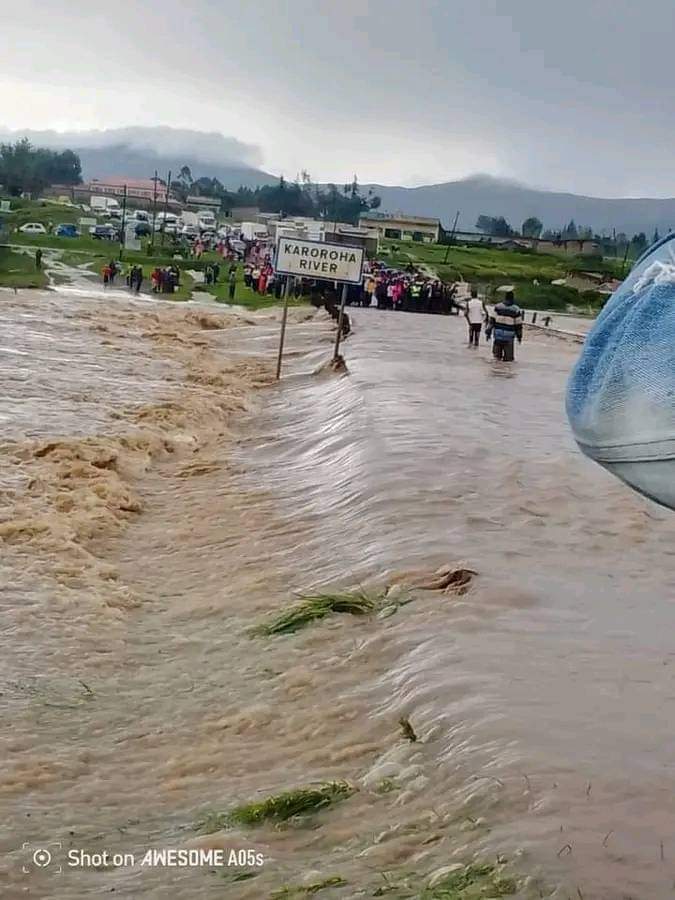The announcement by the Meteorological Department forecasting persistent rainfall over the next seven days across several regions of the country, particularly the Central Highlands, Western, and Rift Valley, carries significant implications for various aspects of life, including agriculture, infrastructure, and public safety.
This forecast, coupled with the warning of continued flooding in low-lying areas, flood plains, and urban areas with inadequate drainage, underscores the importance of preparedness and proactive measures to mitigate potential risks and damages.To comprehend the forecast’s nuances and the subsequent prediction of reduced rainfall intensity in the latter half of the period, it is essential to delve into the dynamics of weather systems, local geography, and the broader climatic patterns affecting the region.
Understanding these factors provides insight into the meteorological phenomena driving the current conditions and their likely evolution over the forecast period.The Central Highlands, Western, and Rift Valley regions are known for their diverse topography, which influences weather patterns and precipitation distribution. The convergence of geographical features such as mountain ranges, valleys, and water bodies can create localized microclimates and influence the movement and intensity of weather systems.
In this context, the Central Highlands, characterized by elevated terrain, may experience orographic rainfall as moist air masses are lifted and cooled, leading to condensation and precipitation. Similarly, the Rift Valley’s unique geological formation can contribute to the enhancement of rainfall through orographic and convective processes.
Furthermore, the prevailing weather systems, such as the Inter-Tropical Convergence Zone (ITCZ), play a crucial role in shaping the distribution of rainfall across the country. The ITCZ, characterized by the convergence of trade winds and associated convective activity, tends to migrate with the seasonal shift in solar radiation.
During certain periods, the ITCZ may oscillate, leading to fluctuations in rainfall patterns and intensity. Understanding the behavior of the ITCZ helps meteorologists anticipate changes in weather conditions and issue timely forecasts and advisories.The forecast’s emphasis on the risk of flooding in low-lying areas, flood plains, and urban zones with inadequate drainage highlights the vulnerability of certain regions to the impacts of heavy rainfall.
Urbanization, land-use changes, and insufficient infrastructure can exacerbate the effects of flooding, posing threats to lives, property, and socioeconomic activities. In this regard, effective urban planning, investment in resilient infrastructure, and community-based disaster preparedness are essential components of adaptive strategies to minimize flood risk and enhance resilience to extreme weather events.
The prediction of reduced rainfall intensities during the latter part of the forecast period suggests a potential shift in atmospheric conditions or the gradual weakening of prevailing weather systems. Several factors could contribute to this anticipated decrease in rainfall, including the displacement of the ITCZ, changes in sea surface temperatures, and the influence of large-scale atmospheric circulation patterns such as the Madden-Julian Oscillation (MJO) or the El Niño-Southern Oscillation (ENSO).
The MJO, characterized by the eastward propagation of enhanced convection and atmospheric disturbances, can modulate rainfall variability on regional and global scales. Its interaction with other climate drivers, such as ENSO, can influence the timing and intensity of rainfall events, leading to periods of enhanced or suppressed precipitation. Similarly, the phase and strength of ENSO, indicated by sea surface temperature anomalies in the equatorial Pacific Ocean, can influence rainfall patterns in different parts of the world, including the East African region.
In addition to large-scale climate phenomena, local atmospheric dynamics, such as the diurnal cycle of heating and cooling, can also influence rainfall patterns and intensity. The interaction between solar radiation, surface temperatures, and atmospheric instability can trigger convective processes, leading to the development of thunderstorms and localized heavy rainfall. Understanding these mesoscale processes is crucial for accurately forecasting short-term weather events and assessing their potential impacts on local communities and ecosystems.
The Meteorological Department’s forecast of persistent rainfall over the next seven days in the Central Highlands, Western, and Rift Valley regions, accompanied by warnings of continued flooding in vulnerable areas, underscores the complex interplay of atmospheric dynamics, geographical factors, and climatic variability shaping weather patterns in the region.
The prediction of reduced rainfall intensities in the latter half of the forecast period reflects the dynamic nature of weather systems and the influence of larger-scale climate phenomena on regional precipitation patterns. As communities and authorities prepare to cope with the challenges posed by heavy rainfall and flooding, proactive measures, informed decision-making, and adaptive strategies are essential for enhancing resilience and safeguarding lives and livelihoods in the face of changing weather conditions.
In response to the forecast of persistent rainfall and the associated risk of flooding, various stakeholders, including government agencies, local authorities, and community organizations, must take proactive measures to mitigate potential impacts and protect vulnerable populations. One critical aspect of preparedness is early warning systems, which enable timely dissemination of weather forecasts, flood alerts, and evacuation orders to at-risk communities.
By enhancing communication channels and public awareness, early warning systems empower individuals and communities to take preventive actions, such as relocating to safer areas, securing valuable assets, and stockpiling emergency supplies.In addition to early warning systems, investments in infrastructure resilience are essential for minimizing the adverse effects of heavy rainfall and flooding.
This includes the construction of flood defenses, drainage systems, and retention ponds to mitigate the risk of inundation and channel excess water away from urban areas. Green infrastructure, such as vegetated swales and permeable pavements, can also help absorb rainwater and reduce runoff, thereby alleviating pressure on conventional drainage systems and reducing the risk of urban flooding.
Furthermore, land-use planning and zoning regulations play a crucial role in reducing vulnerability to flooding and mitigating the impacts of climate change. By delineating flood-prone areas, restricting development in high-risk zones, and promoting resilient building practices, authorities can minimize exposure to flood hazards and safeguard lives and property. Integrating climate considerations into urban planning processes ensures that new infrastructure projects and developments are designed to withstand future climate-related risks, thereby enhancing long-term resilience and sustainability.
Community-based approaches to disaster risk reduction are equally important for building resilience and fostering adaptive capacity at the grassroots level. Local communities possess valuable knowledge, resources, and social networks that can be mobilized to address climate-related challenges and support collective action.
Participatory risk assessments, community mapping exercises, and capacity-building initiatives empower residents to identify hazards, prioritize adaptation measures, and collaborate with authorities to implement resilience-building interventions tailored to their specific needs and circumstances.Moreover, the forecasted reduction in rainfall intensities during the latter part of the forecast period provides a window of opportunity for recovery and reconstruction efforts in areas affected by flooding.
However, it is essential to approach post-disaster recovery in a holistic and sustainable manner, taking into account the long-term resilience of communities and ecosystems. This includes restoring natural habitats, strengthening livelihoods, and promoting inclusive and equitable recovery processes that prioritize the needs of vulnerable groups, including women, children, and marginalized communities.
The forecast of persistent rainfall and the risk of flooding in several regions of the country underscores the importance of proactive measures, adaptive strategies, and collaborative approaches to building resilience to climate-related hazards.By investing in early warning systems, infrastructure resilience, land-use planning, and community-based disaster risk reduction, authorities can enhance preparedness, minimize vulnerabilities, and protect lives and livelihoods in the face of changing weather patterns and evolving climate risks.
As the country continues to grapple with the challenges of climate change, resilience-building efforts must be integrated into policy, planning, and development processes to ensure a sustainable and resilient future for all.

